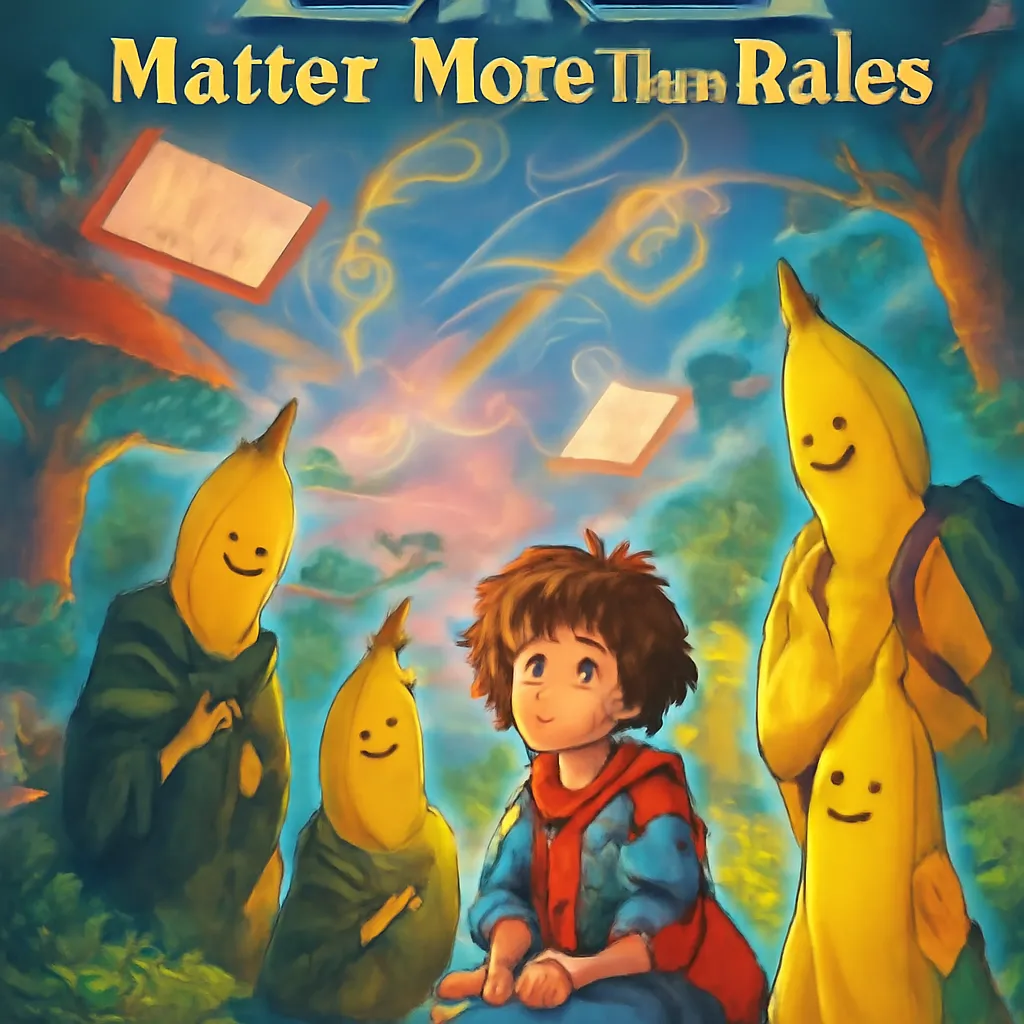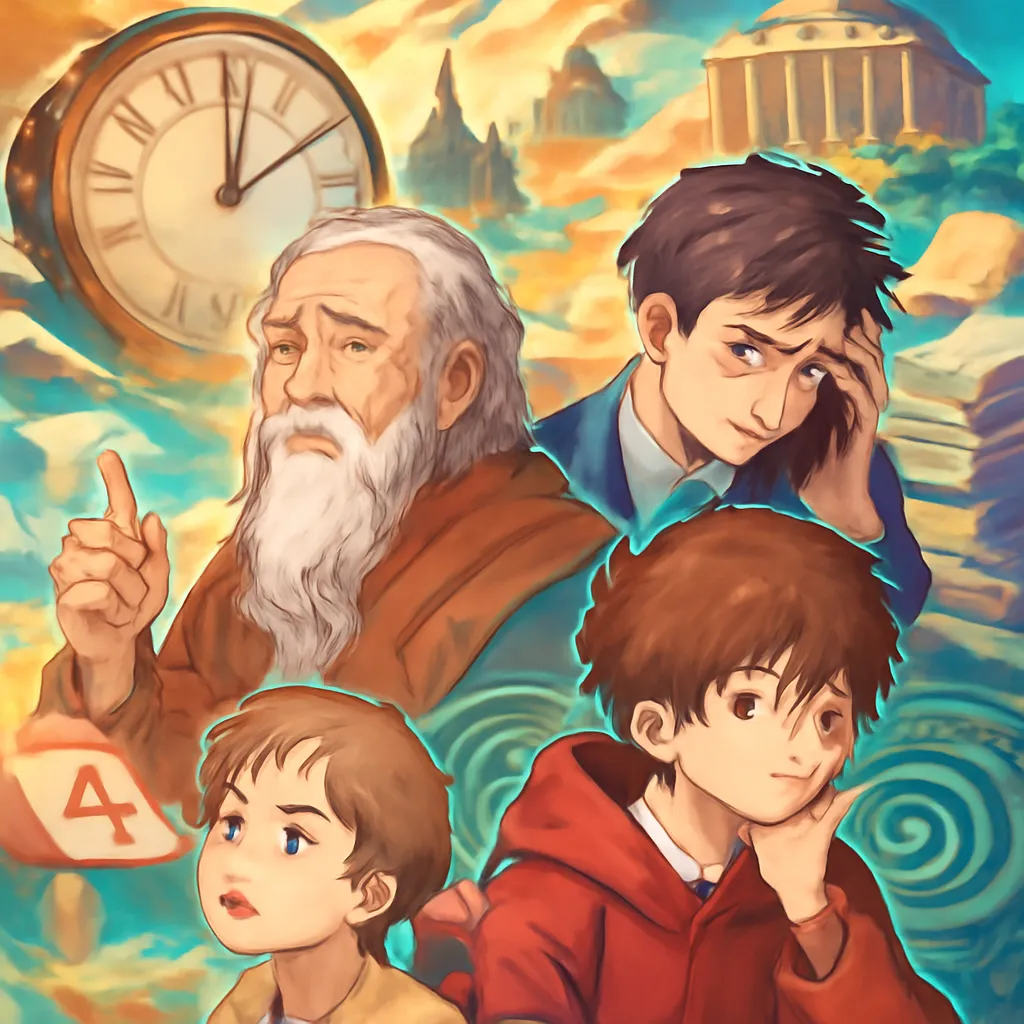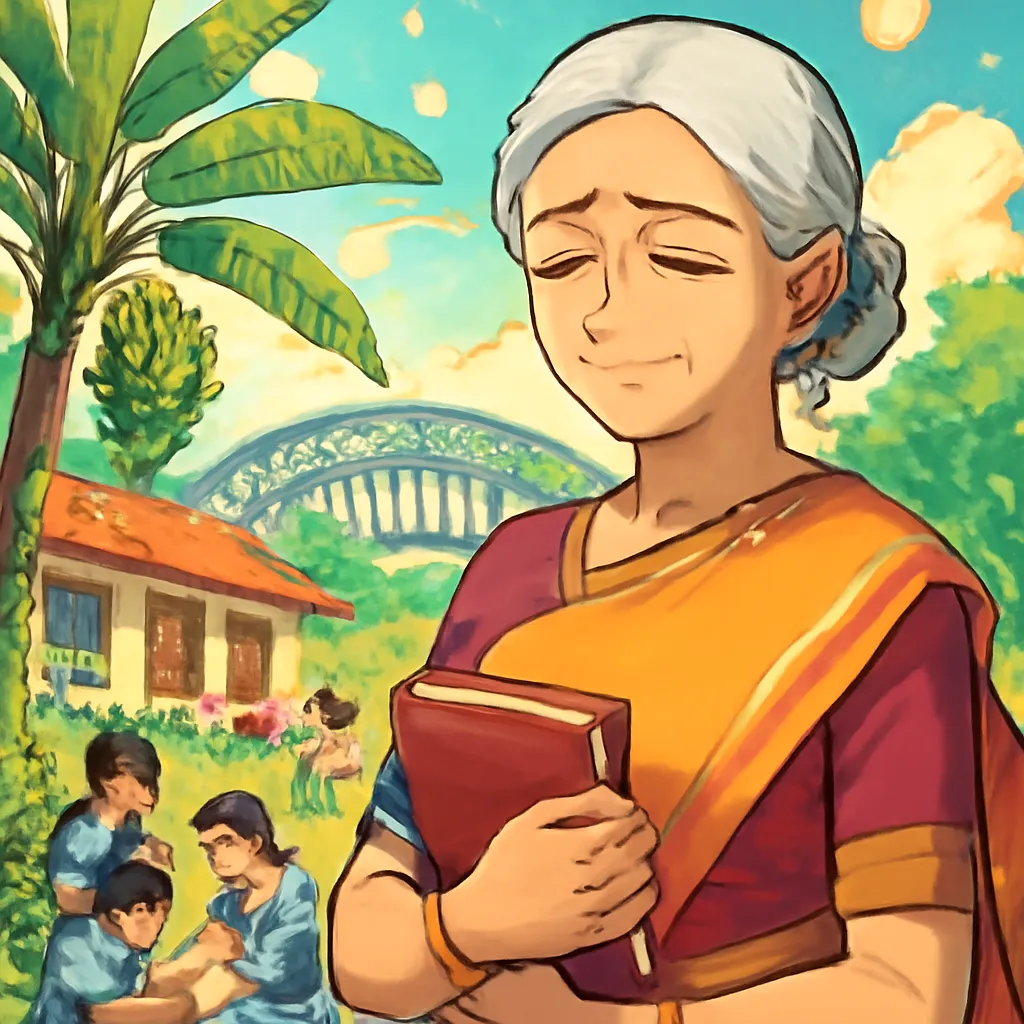Imagine flying across cities just to catch a room full of students before a business meeting. Only someone like Sudha Murty would see a couple wasted hours in Bangalore traffic as an opportunity to share ancient fables and modern wisdom with children. In 2017, at Jamnabai Narse School, Mrs. Murty did just that—treating students to stories about bananas (the fruit and the hidden wonders), misbehaving Rishis, and what really matters in life. Let’s unpack her lively lessons that still echo far beyond that auditorium.
Banana Stories: Why Tales Matter More Than Rules
Imagine you’re a grandparent, or maybe a parent, trying to convince a five-year-old to eat a banana. You could list all the nutritional benefits, talk about potassium, or even mention how it’s good for growing bodies. But if you’re Sudha Murty, you take a different path—one that winds through myth, tradition, and a little bit of magic. This is where the real power of the education system begins: not with rules, but with stories.
Sudha Murty, celebrated author and Rajya Sabha member, knows that children (and honestly, most adults) don’t respond well to lectures. Her granddaughter Krishna, living in London, is just like any other modern child—curious, a bit stubborn, and always asking “why?” When Murty suggests eating a banana, Krishna doesn’t just accept it. She wants reasons. Not just any reasons, but ones that make sense to her five-year-old mind.
Instead of rattling off facts, Murty leans into something deeper. She shares a story, one rooted in Sanskrit tradition and Indian mythology. She tells Krishna about Rishi Durvasa, a sage known for his temper. People, Murty says, would get nervous when he visited, hoping he’d leave soon. One day, Durvasa’s wife, Kadali, asks for a special boon—a fruit that isn’t from heaven, grows on earth, is used in worship, flowers once a year, has no seeds, and whose every part can be used in cooking. Durvasa, after some grumbling, creates the banana, or as it was first called, Kadali Falla.
This isn’t just a bedtime story. It’s a bridge between generations, a way to pass down values, culture, and practical advice without sounding like a nag. Murty’s approach is simple, but powerful: “If you want a child to listen, tell them a story, not a sermon.”
Research shows that stories are more effective than instructions, especially in primary school settings. Children relate to characters, remember plot twists, and absorb lessons almost by accident. The education system often leans on discipline and hard work, but as Murty demonstrates, these values stick better when wrapped in narrative. It’s not just about bananas—it’s about shaping the future, one tale at a time.
- Stories create context. A banana isn’t just a fruit; it’s a symbol of tradition, resourcefulness, and even divine creativity.
- Stories are memorable. Krishna may not remember a lecture on vitamins, but she’ll remember Kadali Falla and the clever wish that brought bananas to earth.
- Stories are non-threatening. No child feels scolded or pressured when listening to a story. It’s advice, disguised as entertainment.
Murty’s method also highlights a larger truth about teacher training and learning technology. In a world where education is rapidly changing, and where teachers are expected to keep up with new methods and tools, the heart of teaching remains the same: connection. Whether you’re using the latest app or telling an ancient myth, what matters is reaching your audience. That’s why ongoing teacher training, as Murty advocates, should focus not just on technology, but on the art of storytelling and engagement.
The banana story isn’t just about getting a child to eat fruit. It’s about how the best lessons—about discipline, hard work, or even language—are learned through tales that stick with us. The Sanskrit “Kadali Falla” becomes “banana,” and a simple snack becomes a lesson in listening, creativity, and the power of narrative.
If you want a child to listen, tell them a story, not a sermon.
So next time you’re tempted to lay down the law, remember Sudha Murty’s banana story. Sometimes, a tale is all it takes to shape a future.

Generations, Stress, and the Myth of Golden Eras
Have you ever caught yourself thinking, “Kids these days just don’t get it”? Maybe you’ve heard your parents say it. Or your grandparents. It’s a familiar tune, echoing through family dinners and school meetings. But here’s the twist—this isn’t a modern complaint. In fact, it’s ancient. Literally.
Sudha Murty, a renowned educator and Rajya Sabha member, once stood inside a 7,000-year-old Egyptian pyramid, staring at hieroglyphs carved by hands long gone. She asked the Egyptologist beside her to translate. The message? A lament about the next generation: “They don’t respect time, they don’t respect money, they don’t respect elders. They have less common sense. They are less hardworking. I really do not know how they will survive.” Sound familiar? It’s almost as if the builders of the pyramids were channeling the same worries you hear today.
This ancient grumbling about generational differences is oddly comforting. It means you’re not alone in your concerns about the education system or the discipline and hard work of today’s youth. Every era has its own flavor of stress, but the core anxieties remain the same. Murty’s insight? Stress isn’t new. It just wears different clothes.
Stress: A Shape-Shifter Through Time
Think about it. Your great-grandmother might have panicked over a child’s fever because antibiotics didn’t exist. Your grandmother worried about diseases that are now easily treated. For your parents, maybe it was the fear of moving to a big city like Bombay—a once-in-a-lifetime event, especially for families from rural Karnataka. Today, your worries might revolve around screen time, exam pressure, or the ever-changing demands of the education system. But at its core, stress is simply adapting to the times, not multiplying.
Math, Ratios, and the Truth About Generational Strengths
Murty uses a simple math analogy to drive this point home. If you know fractions, you’ll get it: 1/2 is the same as 2/4, 4/8, or even 16/32. The numbers look different, but the value is unchanged. Generational differences work the same way. What seems like a massive gap—more stress, less discipline, new pedagogical trends—might just be a different form of the same ratio.
She’s observed this across seven generations in her own family. Each one faced unique challenges, but also displayed resilience, adaptability, and their own kind of discipline and hard work. As Murty puts it,
“Every generation has its plus and minus… their own strength.”
Respect, Resilience, and Adaptability: The Real Golden Era
So, what really matters? It’s not about which generation had it tougher or which education system was better. It’s about respect—for time, for elders, for learning—and the ability to adapt. The real golden era isn’t behind us or ahead of us. It’s in the way each generation finds its own strengths, even as the world changes around them.
Research shows that these generational complaints are timeless. The specifics may shift—today’s pedagogical trends, tomorrow’s technology—but the underlying strengths that matter most, like resilience and adaptability, are always in play. If you’re worried about the future, maybe it’s time to look at the past and realize: every generation has survived, and even thrived, in its own way.
So next time you hear someone sigh about “kids these days,” remember the hieroglyphs. The more things change, the more they stay the same.

Discipline, Regret, and the Tale of 'Portado' (the Bunking Genius)
Imagine sitting in your primary school classroom, watching a classmate breeze in late, always with a story, always with a grin. That was Portado—Sudha Murty’s bright, charming friend who seemed to have it all figured out. He believed that connections, not discipline and hard work, would open every door. And for a while, it looked like he was right. But life, as Murty’s story shows, has a way of revealing the real value of discipline—often when it’s too late to go back and build those habits.
Portado’s approach to the education system was simple: skip classes, show up just enough to scrape through, and rely on last-minute cramming. He’d collect old question papers, predict what would appear in the exams, and study only what he thought mattered for marks. For four years, this shortcut worked. He earned his first-class degree, all while avoiding the daily grind that Murty and others endured. But as the years rolled on, the cracks began to show.
Decades later, in a chance meeting in Dubai, Portado’s story took a different turn. The once-confident genius now wore the weight of regret. He confessed to Murty, “I got marks, but I did not have knowledge.” His bosses and subordinates quickly realized he lacked the depth that comes from real learning. The result? He lost jobs, struggled to keep up, and found himself far from the life he’d imagined. The connections he’d counted on couldn’t save him from the consequences of skipping the hard work. As he put it, “If you don’t discipline yourself in school or college, you pay a heavy price.”
Murty’s tale isn’t just about one man’s regret—it’s a lesson for every student, parent, and teacher. The education system may seem focused on marks, but research shows that long-term success depends on building disciplined habits. Marks can open doors, but only real knowledge and curiosity keep them open. The habits you form in primary school—showing up, respecting others, working consistently—shape your future in ways you can’t always predict.
Today, as the world changes faster than ever, teacher development is just as important as student discipline. Sudha Murty, now a Rajya Sabha member, has called for regular training and assessments for teachers. She believes that learning shouldn’t stop after recruitment. Teachers must adapt to new technologies and teaching methods to guide students effectively. After all, a great education system relies on teachers who never stop learning themselves.
Murty’s story of Portado echoes in classrooms everywhere. It’s tempting to chase shortcuts, to believe that marks or connections are enough. But discipline and hard work—those unglamorous, everyday choices—are what truly shape your future. When you skip building good habits early, regret can linger for decades. As Portado realized too late, “I want my daughters to study well. They should not become like me.”
- Childhood discipline pays off in unexpected ways—avoid 'Portado’s' regrets.
- Academic shortcuts bring short-term gains but often sabotage success later.
- Real knowledge and curiosity, not just connections, create lasting impact.
- Discipline = showing up, respecting others, and working consistently.
If you don’t discipline yourself in school or college, you pay a heavy price.
Murty’s anecdote of Portado encapsulates why discipline matters beyond exams—regret haunts those who skip building good habits early. The lesson? Invest in discipline and hard work from the start, because the habits you build now will shape the life you live tomorrow.

The Art of Listening: Parents, Teachers, and the Power of Subtle Guidance
If you’ve ever found yourself rolling your eyes at a parent or teacher’s advice, you’re not alone. Maybe you’ve heard, “You should be hardworking,” or “Discipline is important,” so many times that it just sounds like background noise. But here’s something you might not realize: the way these messages are delivered—especially in primary school—can shape your habits and mindset for life. Sudha Murty, a respected voice in the Indian education system, believes that the art of listening and gentle guidance is far more powerful than nagging or direct commands.
Why Nagging Rarely Works (and What Actually Does)
Let’s be honest: nobody likes being nagged. It’s easy to tune out when someone keeps repeating the same advice. Research shows that storytelling is a practical way to guide children and build positive habits. Instead of saying, “Do your homework now!” imagine a parent sharing a story about a child who struggled but found success through discipline and hard work. Suddenly, the lesson feels relatable, not forced.
Murty urges parents and teachers to listen first, empathize, and then guide through shared stories. This approach isn’t just softer—it’s smarter. When you hear a story, you’re more likely to see yourself in it, to connect the dots, and to remember the lesson. That’s the subtle power of storytelling in the education system.
“People who care for you only will tell you the truth.”
People who care for you only will tell you the truth.
It’s easy to forget, but most advice from parents and teachers comes from a place of genuine care. They don’t want to annoy you; they want to help you grow. Murty reminds us that the truth, even when it’s hard to hear, is a sign that someone cares enough to guide you. The trick is in how that truth is shared.
The Subtle Art of Advice: Stories Over Commands
Think back to your favorite teacher in primary school. Chances are, they didn’t just bark orders—they told stories, asked questions, and made you think. Murty believes that’s no accident. She advocates for advice delivered through storytelling, not direct command. It’s about saying, “Let’s explore why discipline and hard work matter,” instead of, “You must be disciplined.”
This subtle shift makes all the difference to young minds. When you’re invited to explore, rather than ordered to obey, you’re more likely to engage and remember. It’s a lesson that goes beyond the classroom, shaping how you approach challenges and relationships throughout life.
The Role of Teachers: Patience, Value, and Ongoing Growth
Murty also urges parents never to underestimate the patience or value of teachers. In the evolving landscape of the education system, teacher training is crucial. She’s proposed mandatory training modules and regular examinations for primary school teachers every three years. Why? Because what isn’t learned in youth is rarely picked up later. Teachers need to keep learning, adapting, and finding new ways to reach students—especially as technology and teaching methods change.
Current teacher training in India covers pre-service and in-service programs, but Murty points out that ongoing assessment and development are often missing. She believes that excellent school infrastructure means little without well-trained, empathetic teachers who know how to listen and guide with subtlety.
Listening, Empathy, and the Future
So next time you hear advice from a parent or teacher, pause for a moment. Is it a command, or is it a story? Are they nagging, or are they guiding you with care? The difference might just shape your future in ways you can’t yet imagine.
Building a Future: What Schools—and Society—Owe Every Child
Imagine walking into a school where the walls are freshly painted, the playground is spotless, and every classroom has a smartboard. It looks perfect, right? But Sudha Murty, speaking to a sea of young faces at the Jamnabai Narse campus, reminds us that real education goes far beyond bricks and gadgets. The heart of any education system, she insists, is not the building—it’s the teacher. And for teachers to truly shape the future, they need more than a degree or a certificate on the wall. They need to keep learning, just like you do.
Murty’s message is simple, but powerful: infrastructure alone isn’t enough. You can have the best technology, the latest books, and even the most ambitious National Education Policy (NEP). But if the people standing in front of the class aren’t growing, adapting, and staying curious, then the system fails its children. She’s seen it herself, both as a lifelong educator and as a passionate advocate in the Rajya Sabha. Her call is clear—teacher training shouldn’t end at recruitment. Instead, she proposes something bold: every teacher should undergo regular assessments and upskilling, at least every three years. Not as a punishment, but as a way to keep pace with changing pedagogical trends and learning technology.
Why is this so important? Because, as Murty puts it,
“Teaching is an art—a mix of qualification, method, skills, adaptability.”The world changes fast. New technology enters the classroom, new policies like NEP 2020 and programs such as NISHTHA roll out, and the needs of students shift. If teachers aren’t given the tools and time to adapt, the gap between what’s taught and what’s needed only grows wider. Research shows that continuous teacher development leads to better student outcomes, more relevant lessons, and a more resilient education system overall.
But Murty’s vision isn’t just about teachers. She believes in lifelong learning for everyone—students and educators alike. She tells stories of her own journey, learning new languages and skills, never letting age or tradition become a barrier. In fact, she sees language as a bridge, not a wall. Drawing from her own multilingual experience, she encourages children to embrace multiple languages, seeing them as tools for connection, not division. This perspective is especially timely, given the ongoing debate over the NEP’s three-language formula and the political tug-of-war between state and central governments. For Murty, the answer is simple: let language unite us, not separate us.
Of course, programs like NISHTHA and policies like the NEP are steps in the right direction. They aim to modernize Indian classrooms and bring teacher development to the forefront. But as Murty points out, these efforts need robust frameworks for assessment and real, ongoing support for teachers. Otherwise, they risk becoming just another box to tick, rather than a catalyst for real change.
So, what do schools—and society—owe every child? Not just a desk, a book, or a shiny new tablet. They owe you teachers who are always learning, always adapting, and always ready to inspire. They owe you an education system that values growth over routine, connection over division, and curiosity over complacency. In the end, building a future isn’t about the walls we raise, but the bridges we build—between teachers and students, between languages, and between generations. And that, perhaps, is the greatest lesson Sudha Murty has to offer.
TL;DR: If you want school, home, and society to truly shape wise, resilient adults, tune into Sudha Murty. She says: value stories, embrace discipline, learn from every generation, and don’t wait for tomorrow to start building your life.



